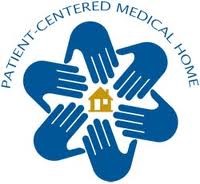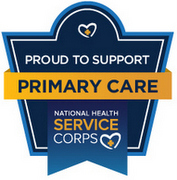Brain Drain
Obesity, diabetes, and brain damage
“It’s well-known that type 2 diabetes can cause medical complications in certain organs, including the brain. But overweight and obese people with early-stage type 2 diabetes have more severe abnormalities in brain structure and cognition than normal-weight people with type 2 diabetes, according to a new study in Diabetologia, the journal of the European Association for the Study of Diabetes.
“Having type 2 diabetes and being overweight, then, can combine to have a greater effect on brain structures.”
Click here to read the full CNN article.
Marijuana abuse
People Who Live
in states with legalized medical marijuana are more likely to use and abuse marijuana, study suggests.
USA Today (4/26, Hughes) reports people who live in states that have “legalized medical marijuana are more likely to use and abuse cannabis than people” who live in states that have not legalized medical marijuana, according to a study published online April 26 in JAMA Psychiatry. Researchers found that the number of people using marijuana “without a doctor’s note” as well as the number of people with a marijuana use disorder both increased in states with legalized medical marijuana from 2001 to 2013. The article mentions that the study was funded by the National Institute on Drug Abuse and the National Institute on Alcohol Abuse and Alcoholism.
Reuters (4/26, Seaman) reports in an accompanying editorial, Dr. Wilson Compton and others at the National Institute on Drug Abuse “say policymakers need to understand which parts of medical marijuana laws are tied with positive and negative effects.”
Taking your medications?
Nonadherence To Prescribed Medications Is An “Epidemic” In The US.
The New York Times (4/17, Brody, Subscription Publication) reports, “Nonadherence to prescribed medications” is “an out-of-control epidemic in the” US “that costs more and affects more people than any disease Americans currently worry about.”
The article suggests that nonadherence “explains why so many patients don’t get better, suffer surprising relapses or even die when they are given drug prescriptions that should keep their disorders under control,” cites research on how widespread the problem is, and also outlines why the problem may be so common.
Reasons for Medication Nonadherence
ICD-10 afflictions
The World Health Organization
has a wonderful website where all 68,000 of the ICD-10 codes we’re now using to classify and bill for the various conditions we treat are categorized and enumerated.
First a little about symbolism
The WHO logo at left contains an international symbol of medical care also used by the American Medical Association, a serpent lifted up on a pole, that some believe was derived the mythological figure of Asclepius, a supposed half-deity dating to about 1200 BC who was associated with healing and medicine.
However, those of us in the Judeo-Christian tradition trace the symbol back even further to the experience of Moses in the wilderness in about 1450 BC as recorded in Numbers 21.9: “So Moses made a bronze serpent and set it on a pole. And if a serpent bit anyone, he would look at the bronze serpent and live.” This has been carried forward into our faith in this passage quoted in John 3.14-15: “And as Moses lifted up the serpent in the wilderness, so must the Son of Man be lifted up, that whoever believes in him may have eternal life.“
In the Bible, the serpent has been a symbol of Satan and the works of darkness, deception, and death from the Garden of Eden until now. And Jesus being lifted up on the cross in the serpent’s place has become the substitute whose life, death, and resurrection brings light, truth, and healing.
And now the code list
ICD-10 stands for the 10th Edition of the “International Classification of Diseases” and has a section that includes a complete list of codes for “persons with potential health hazards related to socioeconomic and psychosocial circumstances” that will give you an idea of the range of personal afflictions and “baggage” that many of us suffer from and/or bring with us into adulthood. Many of these conditions, especially those in the Z61 category, are what we refer to as “Adverse Childhood Experiences” which can have lifelong consequences.
Click here to read one list of serpent bites that people experience, then weep and join us in prayer.
E-Cigarettes
The good news
is that the smoking rate among New York’s high school students declined to a historic low of 4.3 percent in 2016.
The bad news
is that during the last two years, the use of e-cigarettes among youth nearly doubled from 10.5 percent in 2014 to 20.6 percent in 2016. Many young people are lured by the intentionally sweet flavors and the mistaken belief that e-cigarettes are safe to use.
But e-cigarettes are not safe. Both cigarettes and e-cigarettes contain nicotine, which is highly addictive and can cause permanent changes in young, developing brains.
In addition, although combustible tobacco products contain more toxins than e-cigarettes, the aerosol produced by e-cigarettes is not a harmless water vapor. Rather, it often contains ultrafine particles that have been linked to lung disease; heavy metals such as tin, lead and nickel; and volatile organic compounds such as benzene and toluene.
Research also shows that the use of e-cigarettes by young people is associated with the use of other tobacco products, including cigarettes. The U.S. Food and Drug Administration considers e-cigarettes a tobacco product, as does the Department of Health. Governor Cuomo’s 2017 Executive Budget proposes regulating and taxing e-cigarettes in a similar manner as traditional cigarettes. This proposal would include e-cigarettes in the state’s comprehensive indoor air law and impose a 10 cent per milliliter tax on vapor products, thereby reducing the affordability of vapor products for youth, the age group most sensitive to price.
But we need physicians to weigh in, too. I encourage all health care providers to talk to their patients – young and old alike – about the dangers of e-cigarettes and to discourage their use. For patients who are already using traditional cigarettes or e-cigarettes, there are currently seven FDA-approved medications for smoking cessation, including five nicotine replacement therapies. Medicaid and most insurance plans will cover a portion of the cost of smoking cessation products.
Howard A. Zucker, M.D., J.D., New York State Commissioner of Health
Local confirmation of the bad news
Researchers Break Down Chemicals in E-cig Flavorings, Impact on Lungs
The label may say “cinnamon” or “vanilla” but the true contents of e-cigarette flavorings are acetoin, diacetyl, and other chemical additives that are known to irritate the respiratory tract and impair lung function, according to a collaborative study from western New York scientists.
Senior author Irfan Rahman, Ph.D., professor of Environmental Medicine and part of the Lung Biology and Disease Program at the University of Rochester Medical Center, said the findings suggest that chemical flavorings in e-cigarettes not only cause inflammation but may rapidly impair the critical epithelial cells in the airways, which act as the first defense against infections and toxins. When the epithelial barrier becomes more permeable or leaky due to chemical assaults, life-threatening lung diseases can occur.
Click here to read more about this local URMC study.
‘Frequent fliers’
Risk and cost are high
ROCHESTER — Someone needing a Band Aid or a soda out of a fridge: They sound like jokes, but they are just a few examples EMS workers told News10NBC about non-emergency calls they have to respond to every day. Those people who call 911 for non-emergencies, time after time, are often called “frequent fliers.”
“Non-emergency calls, it depends on the day, but it sometimes outweighs the emergency calls,” said Chief Matt Comer, Greece Volunteer Ambulance.
And those calls can mean that when there is a true emergency, ambulances could have to come from further away. That is because while when you call 911 for an ambulance, one will always come, but it might not be coming from the nearest station. That means that if the ambulances are out on non-emergency calls, people may be waiting longer even when they need help right away.
Click here for a guide about when to use emergency services
If a “frequent flier” has government insurance you are pay for their rides to the hospital and their medical care, even if it is not an emergency.
In Monroe County $9.8 million last year went toward Medicaid for ambulance rides – with a portion paying for those non-emergency calls. But the price tag doesn’t stop there, it continues to add up when “Frequent Fliers” get to the emergency department.
In 2013, New York State had 6.4 million emergency room visits. Out of those, two million were for, what doctors call, common clinical things (i.e. strains, sinus infection, bruises, sore throat, ear ache). Out of that 2 million 90% could have been treated outside of the Emergency Department.
“The price associated with that was 1.3 billion dollars, so at a time when were are all concerned about high-quality affordable health care this is an important issues,” said Dr. Jamie Kerr, Medical Director at Excellus BlueCross BlueShield.
Fixing the problem of “Frequent Fliers” is not easy. EMS works say they try to track the calls, and if they see a problem meet with the patient and their family to try and workout access to care they truly need without calling 911.
by Amanda Ciavarri, WHEC News, February 22, 2017
Myths about Cohabitation
New Study Disproves Three
We’re currently in the midst of National Marriage Week (Feb. 7-14), a yearly celebration that recognizes the importance of this most basic human institution.
We’re also living in an age where cohabitation rates are increasing, in part because our culture increasingly doesn’t value the importance of God’s sacred and foundational gift to men and women.
Too many couples simply don’t see the value in getting married. To them, “marriage is just a piece of paper.” From their vantage point, marriage doesn’t bring any added benefits as long as they’re “secure” in their relationship. Living together, they contend, without the formal legal ties, is also liberating and better for everyone.
But what does the research say? Click here to read the full article by Jim Daly at Focus on the Family with added material from John Curtis, PhD.
“Supersized” dummies
Is “bigger” better?
CNN reports that “at the University of Michigan, researchers created “supersized” crash test dummies modeled on today’s obese drivers.
“Americans are getting bigger and so are crash test dummies. Researchers at the University of Michigan are designing dummies to look like today’s drivers by “supersizing” existing models.
“Crash dummies have been in use for nearly 50 years. These newer models represent older, weightier and obese drivers. Accurate models help researchers better predict the impact of a crash which helps engineers make safer cars.”
What impact, so to speak, will cars designed for obese patients have on smaller adults, adolescents, and children?
Prenatal pot use risky
Medical Groups Advise Against Prenatal Cannabis Use Due To Links To Cognitive Impairment, Academic Underachievement.
The New York Times (2/2, Saint Louis, Subscription Publication) reports, “As states legalize marijuana or its medical use, expectant mothers are taking it up in increasing numbers,” many presuming that “cannabis has no consequences for developing infants.”
But, “marijuana’s main psychoactive ingredient – tetrahydrocannabinol, or THC – can cross the placenta to reach the fetus, experts say, potentially harming brain development, cognition and birth weight.” Currently, “the American Academy of Pediatrics and the American College of Obstetricians and Gynecologists both advise against prenatal cannabis use because of its links to cognitive impairment and academic underachievement.”
This information is added to a long list of problems associated with regular marijuana use.
URMC Video Stories
Watch URMC’s Super Bowl Ads
As the Atlanta Falcons and New England Patriots take to the field on Super Bowl this coming Sunday, UR Medicine will be taking to the airwaves. Two local ads will run on Fox Rochester during the game to showcase the exceptional care offered at our region’s leading medical center.
The first video ad highlights URMC’s stroke care program and the second one its heart transplant program.
The third video tells the story in more depth of Michael, the patient featured in the heart transplant ad. Click on a picture below to get a sneak peek:
The region’s only comprehensive stroke center
Strong Memorial Hospital is the region’s only comprehensive stroke center, meaning that it has the staff with the expertise, training, and treatments necessary to care for the most complex stroke cases.
Click on the picture below to view the ad, which will premiere halftime and features UR Medicine patients and families celebrating cherished moments after making a full recovery.
In the second ad viewers are drawn into dramatic moments of a father’s preparation for heart transplant surgery.
“They’ve got a heart for Michael!”
Click the picture below to view this commercial, which will air at the end of the third quarter and highlights the advanced heart care available only at Strong Memorial Hospital, continuing UR Medicine’s celebration of 200 heart transplants, 200 second chances.
UR Medicine’s Program in Heart Failure and Transplantation has been providing second chances for people for 15 years and is just one of two programs in the state to hold Joint Commission Advanced Heart Failure Certification.

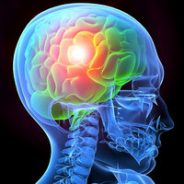





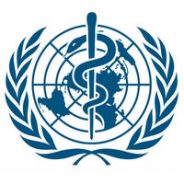






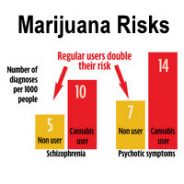



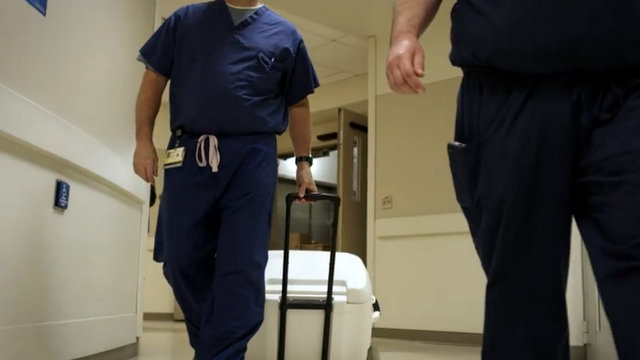
 I'm a happy person who loves getting to know and being able to help people of all ages. I connect with little children (and the little child in most adults) almost immediately. Sharing the joys and trials of relationships, pregnancy and delivery, and family life are the things about family practice that really light my fire. I've found that having a sense of humor and seeing God's love at work can see us through some of life's most difficult times, if we can keep the faith and hang in there together.
I'm a happy person who loves getting to know and being able to help people of all ages. I connect with little children (and the little child in most adults) almost immediately. Sharing the joys and trials of relationships, pregnancy and delivery, and family life are the things about family practice that really light my fire. I've found that having a sense of humor and seeing God's love at work can see us through some of life's most difficult times, if we can keep the faith and hang in there together. 

